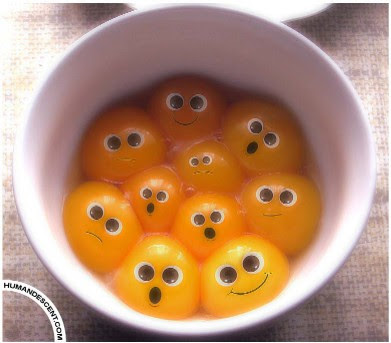- Goth Culture http://en.wikipedia.org/wiki/Goth_culture
- Goth Fashion http://en.wikipedia.org/wiki/Gothic_fashion
- Embalming http://en.wikipedia.org/wiki/Embalming
Modern practices
As practiced in the funeral homes of the Western World (notably North America), embalming uses several steps. Modern embalming techniques are not the result of a single practitioner, but rather the accumulation of many decades, even centuries, of research, trial and error, and invention. A standardized version follows below, but variation on techniques is very common.
The deceased is placed on the mortuary table in the supine anatomical position with the head elevated by a headblock. The first step in embalming is to check that the individual is in fact deceased, and then verify the identity of the body (normally via wrist or leg tags). At this point embalmers commonly perform basic tests for signs of death, noting things such as clouded-over corneas, lividity, and rigor mortis or by simply attempting to palpate a pulse in the carotid or radial artery. In modern times people awakening on the preparation table is largely the province of horror fiction and urban myth. Any clothing on the corpse is removed and set aside and any personal effect such as jewelry is inventoried. A modesty cloth is sometimes placed over the genitalia. The corpse is washed in disinfectant and germicidal solutions. During this process the embalmer bends, flexes and massages the arms and legs to relieve rigor mortis. The eyes are posed using an eye cap that keeps them shut and in the proper expression. The mouth may be closed via suturing with a needle and ligature, using an adhesive, or by setting a wire into the maxilla and mandible with a needle injector, a specialized device most commonly utilized in North America and unique to mortuary practice. Care is taken to make the expression look as relaxed and natural as possible and ideally a recent photograph of the deceased while still living is used as a template. The process of closing the mouth, eyes, shaving, etc is collectively known as setting the features.
The actual embalming process usually involves four parts:
1. Arterial embalming, which involves the injection of embalming chemicals into the blood vessels, usually via the right common carotid artery. Blood and interstitial fluids are displaced by this injection and, along with excess arterial solution, are expelled via from the right jugular vein and collectively referred to as drainage. The embalming solution is injected with a centrifugal pump and the embalmer massages the corpse to break up circulatory clots as to ensure the proper distribution of the embalming fluid. This process of locating vessels for injection and drainage is referred to as raising with injection and drainage from a solitary location being known as a single-point injection. In cases of poor circulation of the arterial solution additional injection points (commonly the axillary, brachial or femoral arteries, with the ulnar, radial and tibial vessels if necessary) are used. The corresponding veins are commonly also raised and utilised for the purpose of drainage. Cases where multiple vessels are raised are referred to as multi-point injections, with a number referring to the extent of vessel's raised (ie a six-point injection or six-pointer). As a general rule the more points needing to be raised the greater the difficulty of the case. An injection utilizing both the left and right carotids is specifically referred to as a restricted cervical injection (RCI) while draining from a different site to injection (ie injecting arterial fluid into the right common carotid artery and draining from the right femoral vein) is referred to as a split injection.
2. Cavity embalming, the suction of the internal fluids of the corpse and the injection of embalming chemicals into body cavities, using an aspirator and trocar. The embalmer makes a small incision just above the navel and pushes the trocar in the chest and stomach cavities to puncture the hollow organs and aspirate their contents. He then fills the cavities with concentrated chemicals that contain formaldehyde. The incision is either sutured closed or a "trocar button" is screwed into place.
3. Hypodermic embalming, the injection of embalming chemicals under the skin as needed.
4. Surface embalming, which supplements the other methods, especially for visible, injured body parts.
A typical embalming takes several hours to complete. An embalming case that requires more attention or has unexpected complications could take substantially longer. The repair of an autopsy case or the restoration of a long-bone donor are two such examples.
Restoration tools, Museum of Funeral Customs
[edit] Grooming
After the body is rewashed and dried, a moisturizing cream is applied to the face. The body will usually sit for as long as possible for observation by the embalmer. After being dressed for visitation/funeral services, cosmetics are applied to make it appear more lifelike and to create a "memory picture" for the deceased's friends and relatives. For babies who have died, the embalmer may apply a light cosmetic massage cream after embalming to provide a natural appearance; massage cream is also used on the lips to prevent them from dehydrating, and the infant's mouth is often left open a bit for a more natural expression. If possible, the funeral director uses a light, translucent cosmetic; sometimes, heavier, opaque cosmetics are used to hide bruises, cuts, or discolored areas. Makeup is applied to the lips to mimic their natural color. Sometimes a very pale or light pink lipstick is applied on males, while brighter colored lipstick is applied to females. Hair gels or baby oil is applied to style the hair, especially for deceased who are male. Mortuary cosmetizing is not done for the same reason as make-up for living people; rather, it is designed to add depth and dimension to a person's features that the lack of blood circulation has removed. Warm areas - where blood vessels in living people are superficial, such as the cheeks, chin, and knuckles - have subtle reds added to recreate this effect, while browns are added to the palpabrae (eyelids) to add depth, especially important as viewing in a casket creates an unusual perspective rarely seen in everyday life. During the viewing, pink-colored lighting is sometimes used near the body to lend a warmer tone to the deceased's complexion. A photograph of the dead person in good health is often sought in order to guide the embalmer's hand in restoring the corpse to a more lifelike appearance. Blemishes and discolorations (such as bruises, in which the discoloration is not in the circulatory system and cannot be removed by arterial injection) occasioned by the last illness, the settling of blood, or the embalming process itself are also dealt with at this time (although some embalmers utilize hypodermic bleaching agents, such as phenol based cauterants, during injection to lighten discoloration and allow for easier cosmetizing).
[edit] Clothing
In the Western World men are typically buried in semi-formal clothing, such as a suit or coat and tie, and women in semi-formal dresses or pant suits. In recent years, a change has occurred and many individuals are now buried in less formal clothing such that they would have worn on a daily basis or other favourite attire. Clothing worn can also reflect the deceased person's profession or vocation: Priests and ministers are often dressed in their liturgical vestments and military personnel and police often wear their uniform. Underwear, singlets, bras, briefs and hosiery are all used if the family desire it and the deceased are dressed in them as they would be in life.
In certain instances a funeral director will request a specific style of clothing, such as a collared shirt or blouse, in order to cover traumatic marks or autopsy incisions. In other cases clothing may be cut down the back and placed on the deceased in this manner rather than a standard dressing procedure to ensure a proper fit. In many areas of Asia and Europe, the custom of dressing the body in a specially designed shroud/funeral gown, rather than in clothing used by the living, is preferred.
After the deceased has been dressed, they are placed in the casket (the term casket is derived from older usage to refer to a "jewel box", it is called a coffin when the container is anthropoid [a stretched hexagon] in form) for the various funeral rites. It is common for photographs, notes, cards and favorite personal items to be placed in the casket with the deceased. Even bulky and expensive items, such as electric guitars, are occasionally interred with a body. In some ways this mirrors the ancient practice of placing grave goods with a person for the afterlife. In traditional Chinese culture, paper substitutes of the goods are cremated with the deceased instead, as well as Hell Bank Notes specifically purchased for the occasion.
[edit] Embalming chemicals
Main article: Embalming chemicals
Embalming chemicals are a variety of preservatives, sanitizers, disinfectant agents and additives used in modern embalming to temporarily delay decomposition and restore a natural appearance for viewing a body after death. A mixture of these chemicals is known as embalming fluid and is used to preserve deceased individuals, sometimes only until the funeral, other times indefinitely.
Typical embalming fluid contains a mixture of formaldehyde, glutaraldehyde, methanol, ethanol, and other solvents. The formaldehyde content generally ranges from 5 to 35 percent and the ethanol content may range from 9 to 56 percent.
[edit] Specialist embalming
Badly decomposing bodies, trauma cases, frozen and drowned bodies, and those to be transported for long distances also require special treatment beyond that for the "normal" case. The restoration of bodies and features damaged by accident or disease is commonly called restorative art or demisurgery and all qualified embalmers have some degree of training and practice in it. For such cases, the benefit of embalming is startlingly apparent. In contrast though, many people have unreasonable expectations of what a dead body should look like, due to the unrealistic portrayal of "dead" bodies (usually by live actors) in movies and television shows. Viewers generally have an unrealistic expectation that a body going through decomposition should look as it did before death. Ironically, the work of a skilled embalmer often results in the deceased appearing natural enough that the embalmer appears to have done nothing at all. Normally cosmeticians are very happy when someone can bring in a picture and the decedent's regular makeups, if worn, to help make their loved one to look as they did when alive.
Embalming autopsy cases differs from standard embalming because the nature of the post-mortem examination irrevocably disrupts the circulatory system, due to the removal of the organs and viscera. In these cases, a six-point injection is made through the two illiac or femoral arteries, subclavian or axillary vessels, and common carotids, with the viscera treated separately with cavity fluid or a special embalming powder in a viscera bag. In many morgues in the United States (such as the Los Angeles County Coroner) and New Zealand, these necessary vessels are carefully preserved during the autopsy; in countries in which embalming has been less common, such as Australia and Japan, they are routinely excised.
Long-term preservation requires different techniques, such as using stronger preservative chemicals and multiple injection sites to ensure thorough saturation of body tissues.
Embalming is meant to temporarily preserve the body of a deceased person. Regardless of whether embalming is performed, the type of burial or entombment, and the materials used — such as wood or metal caskets and vaults — the body of the deceased will eventually decompose. Modern embalming is done to delay decomposition so that funeral services may take place or for the purpose of shipping the remains to a distant place for disposition.
[edit] Embalming for anatomy education
A rather different process is used for cadavers embalmed for dissection by doctors and medical students. Here, the first priority is for long term preservation, not presentation. As such, medical embalmers use embalming fluids that contain concentrated formaldehyde (37–40%, known as formalin) as well as phenol and are made without dyes or perfumes. Many embalming chemical companies make specialized anatomical embalming fluids. Anatomical embalming is performed into a closed circulatory system. The fluid is injected with an embalming machine into an artery under high pressure and flow and allowed to swell and saturate the tissues. After the deceased is left to sit for a number of hours, the veinous system is opened and the fluid allowed to drain out, although many anatomical embalmers do not use any drainage technique.
Anatomical embalmers may choose to use gravity-feed embalming, where the container dispensing the embalming fluid is elevated above the body's level and fluid is slowly introduced over an extended time, sometimes as long as several days. Unlike standard arterial embalming, no drainage occurs and the body distends extensively with fluid. The distension eventually reduces, often under extended (up to six months) refrigeration, leaving a fairly normal appearance. There is no separate cavity treatment of the internal organs. Anatomically embalmed cadavers have a typically uniform grey colouration, due both to the high formaldehyde concentration and to the lack of red colouration (added normally to standard, non-medical, embalming fluids).








